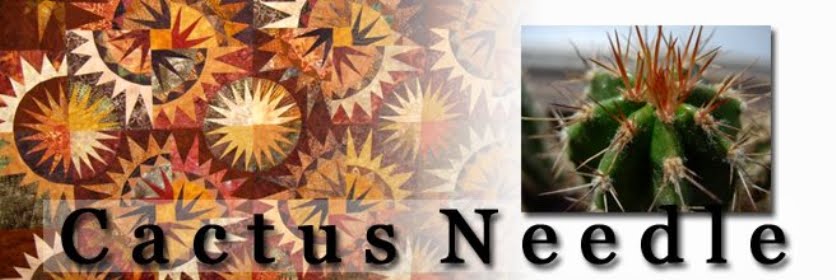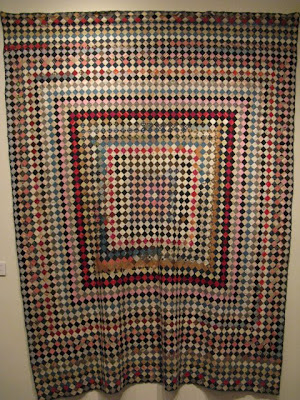With every post I stand in awe of the things people make from the leftover selvages that run along the edge of our quilt fabrics.
Usually, we just throw away those end strips.
That is why I was particularly drawn to the two selvage quilts on display at the San Jose Museum of Quilts and Textile show Scrap Art.

Jacquie Gering of Tall Grass Prairie Studio made a stunning traditional Spider Web quilt mainly drawing from a large collection of selvages.

Tin Ceiling, 2010
45" X 60"
Paper Pieced by machine

Look at her beautiful quilting!
This truly fits the definition of Scrap Art.
Love the minty green solid used for the background.

Jacquie wrote "The piece is a quirky spin on a traditional spider web quilt. The spider web blocks are made with over one thousand selvage pieces. The selvage were collected from fabrics used in quilts I have made since I started quilting, so the quilt is a visual history of my work. The outer selvages in the webs are cut wider to showcase the fabric in addition to the selvage. The outer rings of the webs create bold splashes of color throughout the quilt. The selvages were carefully selected to balance, color, text, and glimpses of fabric. The quilt is densely machine quilted and creates a vintage feel in contrast to the modern fabrics within the spider webs."
Rainbows From The Edge
48" X 48"
Strip quilting- "quilt as you go"
"Fabric selvages provide information, color, variety and stability to any piece of fabric work. I enjoy arranging the 3/4" - 1 1/2" strips by "warm" and "cool" hues, and love the rhythm of machine sewing eh strips on a foundation of batting and backing."

I've taught several classes using the Quilt As You Go method, but I never thought about incorporating selvages.
hmmmm....

And ever since I started reading Karen's blog, I've been collecting selvages although I've never had a plan on how to use them.
Both of these quilts have sparked new ideas!















































